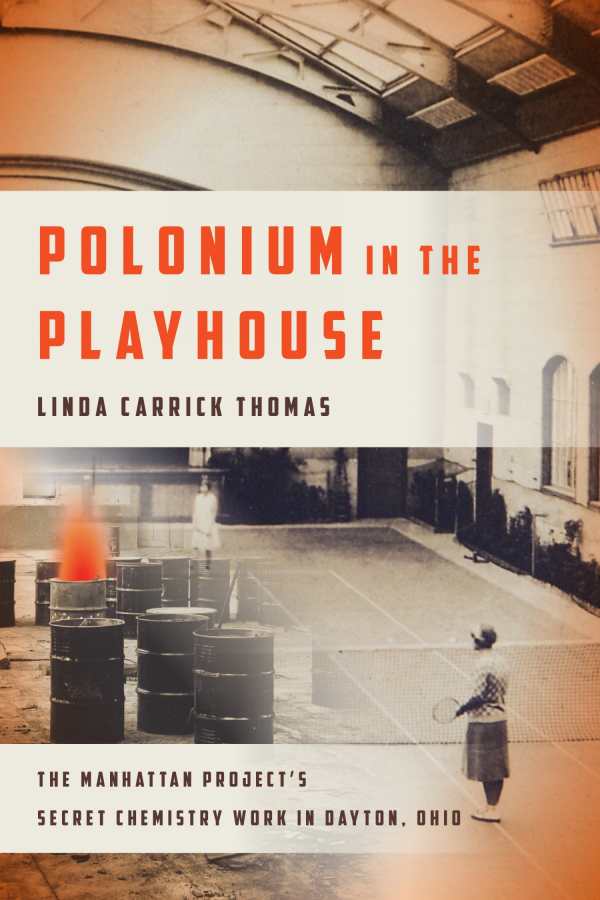Polonium in the Playhouse
The Manhattan Project's Secret Chemistry Work in Dayton, Ohio
This peek inside the massive Manhattan project is fascinating to read.
In her highly readable Polonium in the Playhouse, Linda Carrick Thomas sheds light on a deliciously eccentric piece of WWII home-front history—the transformation of a private estate in a wealthy neighborhood of Dayton, Ohio, into a laboratory for the Manhattan Project, the program for developing the atomic bomb.
Even today, the full scope of the Manhattan Project remains little known, and this book provides a concise introduction. As rumors grew that Germany was close to developing a bomb, America stepped up its own efforts, growing the program from a few scientists to a coast-to-coast network involving well over a hundred thousand people. Dayton, dense with industrial entrepreneurs and home to the Wright Air Force Base, was considered a prime location.
Chemist and metallurgist Charles Allen Thomas was recruited to coordinate and direct production of the refined polonium needed to trigger a nuclear reaction. But where to hide the top-secret facility? Years earlier, Thomas had married into Dayton’s prominent Talbott family, whose estate was now vacant save for the Playhouse, a large structure housing indoor tennis courts, a banquet hall, and theater space. The government rented the building and, unbeknownst to other residents of the neighborhood, set to work.
Improbable as the story may seem, it’s backed up by footnotes that cite a wide range of corroborating sources. The author, a professional journalist, is also the paternal granddaughter of team leader Charles Allen Thomas, and the details she adds make for a lively read. Thomas emerges as an irrepressible creator who patented a method for uniformly manufactured potato chips and whose private clients included the magician Harry Blackstone, who hired him to create chemical-based illusions.
Appendices of maps, terms, and lists of major players, industries, and sites are helpful in understanding the vast scope of the Manhattan Project, while technical drawings answer the question, How does this thing work? Of particular interest are numerous pictures of the people, the Playhouse, and the bomb instrumental in ending the war.
It’s not easy to write a book that will fascinate history buffs, science enthusiasts, and the merely curious alike, but Linda Carrier Thomas succeeds admirably in Polonium in the Playhouse.
Reviewed by
Susan Waggoner
Disclosure: This article is not an endorsement, but a review. The publisher of this book provided free copies of the book to have their book reviewed by a professional reviewer. No fee was paid by the publisher for this review. Foreword Reviews only recommends books that we love. Foreword Magazine, Inc. is disclosing this in accordance with the Federal Trade Commission’s 16 CFR, Part 255.

